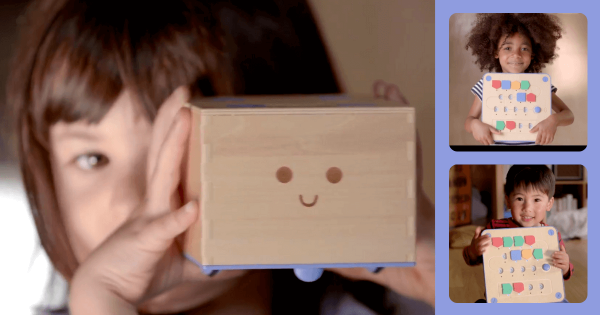Aside from the likely guarantee that both parents and administrators will be skeptical, there could be a handful of possible issues with starting a school esports program. Ultimately, however, there truly are a long list of positives associated with interscholastic esports, like students building career skills, becoming part of a community, and fostering new relationships with peers.
STEM Skills
The importance of all students developing STEM skills in the classroom cannot be overstated in today's rapidly evolving technological landscape. These learning experiences help unlock exciting, dynamic, and immersive opportunities for children to develop, equipping them with practical skills that extend beyond theoretical knowledge in the process. Hands-on tech and maker tools also empower them to become active drivers of their own STEM learning journeys. By exploring areas like coding, 3D printing, robotics, or circuit building, students can engage with real-world problem solving and deepen their understanding of crucial STEAM concepts. This approach not only makes complex subjects more approachable, but also instills a sense of curiosity and enthusiasm for exploration. And, with purposefully designed resources, kids can start learning key STEM skills early on.
Also, STEM tools help promote the development of crucial 21st century skills, like critical thinking, creativity, collaboration, and communication. Students learn to collaborate on projects, troubleshoot issues, and communicate ideas effectively—all essential skills for success in future careers. That naturally hands-on nature of certain tools also caters to diverse learners as students grasp abstract concepts through tangible experiences. Whether by designing prototypes, programming a robot, or conducting experiments, kids can gain an appreciation for practical, real-world STEAM applications. Incorporating EdTech tools in the classroom not only helps students bolster technical proficiency but also nurture an innovative mindset. Tomorrow's problem solvers, inventors, and critical thinkers will be ready to tackle challenges and opportunities if they develop key STEM skills each year that they're in school.
-
Innovations in Environmental Education: databot Webinar
As educators, how can we teach students to engage with challenges like climate change and environmental health? Our spring webinar series tackled these questions with one of our favorite environmental education tools: databot 2.0. In our model of Ecological Education, EdTech tools like databot are key to facilitating students’ appreciation of the environment. -
STEM Careers And What Today's Students Should Know
STEM education is obviously a major piece of 21st century instruction and we know how important these experiences are for students. Many of those hard and soft skills they learn throughout elementary, middle, and into high school often help them better transition into a future career. Plus, for more and more of them, that career might be very closely related -
How Teachers Can Help Foster A STEM Mindset In Students
There are, of course, many different pedagogical approaches that can lead to effective instruction. These days, teachers might be fond of promoting a growth mindset, a maker mindset, or perhaps even instilling a collaborative mindset in children. Whatever buzzwords we toss around, however, they’re only as effective as the purposeful teaching techniques that result. -
Top 10 Job Skills For 2025 From The UBTECH Education Team
Equipping students with the job skills for the future is a challenge because we don’t necessarily know what life in the future workforce will be like. We can make an educated guess though and, with added assistance from our partners at UBTECH Education, we’re exploring some of the most relevant skills and how UBTECH’s STEM products can help students acquire -
Eduporium Weekly | STEM In Early Childhood Education
STEM includes a massive area of content and subjects, making it possible for educational leaders to implement any number of strategies, technology tools, and ideas for creating STEM learning that’s suited for their particular students. And, one of those areas is early childhood STEAM—the relevant, hands-on learning experiences that students can have early in their lives. -
Eduporium Weekly | Tackling STEM in the Best Ways Possible
Unfortunately, we can’t take all the credit, but we’d like to think that we play a small role in helping usher teachers into the 21st century. Now that most schools in the country and in the world are focusing a lot more on STEM education, upgrades need to be made to that as well. What’s the saying? Most of what -
How Teacherpreneurs Can Teach Students Entrepreneurship Skills
The innovation in contemporary education is increasing every day. Schools are using more advanced technologies, like 3D printing, laser cutting tools, and maybe even drones to help impart those necessary skills for the future on their students. Among these key 21st century skills is entrepreneurship since the current gig economy is filled with new opportunities all the time. -
Guest Blog: How STEM Skills Can Change A Student’s Future
As educators, we strive to provide our students with the best foundation for success. But, more importantly, we seek to impart skills that students can tap into throughout their academic and professional careers. The days of rote memorization are long gone. Now, students must learn how to ask the hard questions, solve difficult problems, and be creative. -
Confirming The Importance Of Technology In The Classroom
All too often, we place too much emphasis on driving home concepts and confirming student knowledge by administering tests on a regular basis. Is this the best way for kids to learn, though? Traditionally, most education models have revolved around this approach, but in recent years, more and more teachers have been embracing STEM methods.













